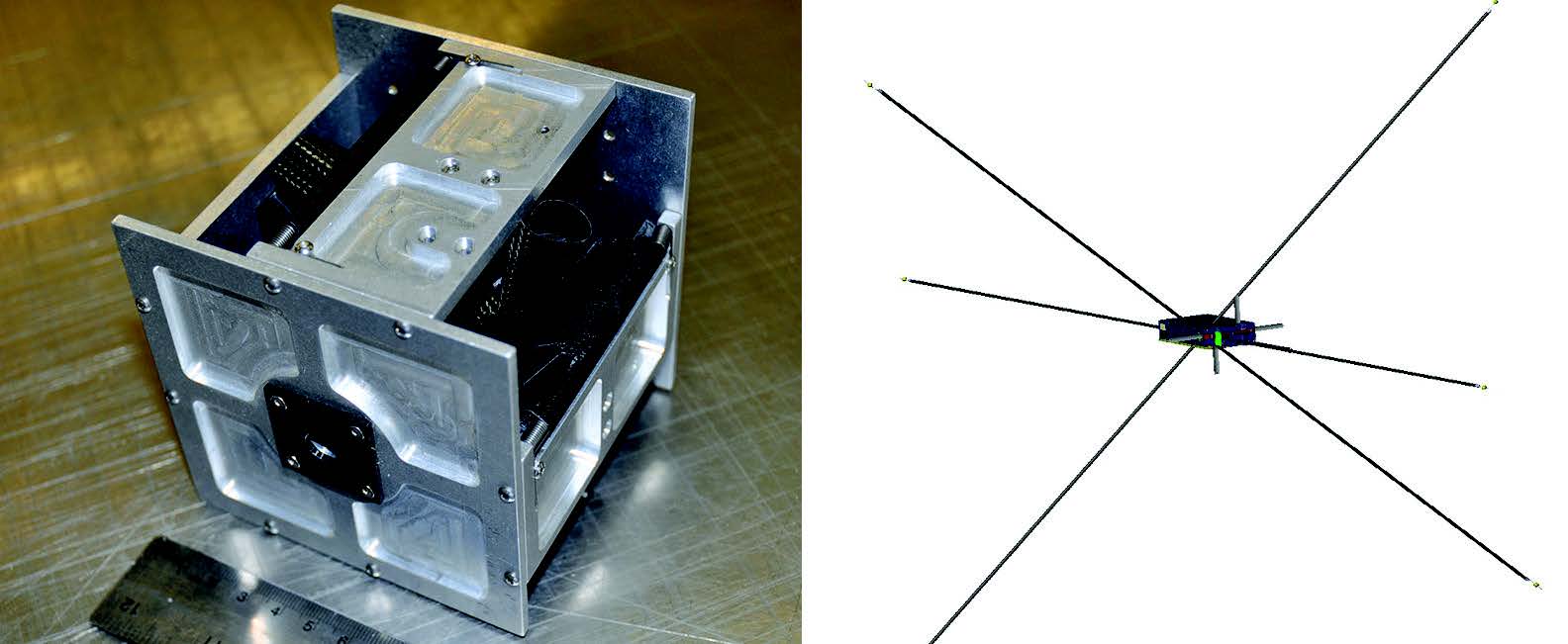2 min read
Technology Development
A team at NASA GSFC is working to develop new technology that will enable small satellites to measure direct current (DC) and alternating current (AC) electric field vectors in space. One element of this new technology involves development of coilable, narrow, composite booms, which when deployed, have the necessary stiffness and straightness to enable electric field double probe measurements to be gathered in space.

Double probe measurements gather the potential difference along a given axis or component of the electric field; tri-axial measurements gather all three perpendicular components of the vector. These newly developed booms include small wires extending the length of the tubes to isolate the sensor elements at the ends from the main boom element. In addition, the team has successfully miniaturized the main electronics of the probes themselves without any loss of capability or sensitivity.
Impact
Electric field instruments gather data to address fundamental, physical processes including the flow of energy in a wide range of space environments. The development of such small tri-axial electric field double probes will enable inexpensive sampling of Earth’s ionosphere, allowing researchers to learn more about a host of important scientific phenomena in geospace— including lightning, aurora, radio waves, and large-scale instabilities.
Status and Future Plans
In 2016, the NASA team developed a tri-axial boom system in conjunction with Composite Technology Development (CTD), Inc. of Lafayette, Colorado. CTD has produced coiled composite booms that will compactly fit inside the 10 cm3 volume of a CubeSat, yet, when deployed, will provide a tri-axial 5m tip-to-tip boom system. The team also developed the associated electric field electronics that will fit inside the CubeSat. During the coming year, researchers will complete testing and mechanical accommodations with other instruments and CubeSat subsystems, preparing a complete prototype experiment for spaceflight.
Sponsoring Organization
This research is sponsored by the Heliophysics Division via the H-TIDeS program. The PI and lead Co-investigators are Drs. R. Pfaff and D. Rowland at NASA GSFC.






